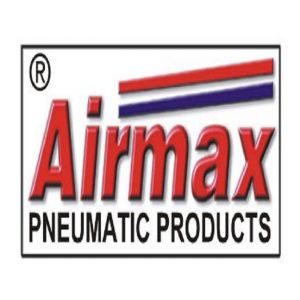Choosing the Right Pneumatic Valve for Your System: Factors to ConsiderPosted by Airmax Pneumatics on February 9th, 2024 In the realm of fluid control systems, selecting the right valve is paramount for optimal performance. The process begins with a thorough understanding of system requirements, ensuring compatibility and efficiency. Here's a brief overview:
In this context, when dealing with pneumatic systems, the careful consideration of these factors becomes even more critical. By addressing these elements meticulously, the path to optimal pneumatic valve selection becomes clearer, leading to enhanced system reliability and performance. Types of Pneumatic Valves: Matching Functionality to System NeedsPneumatic valves play a crucial role in controlling the flow of air in pneumatic systems, facilitating various operations across industries. Understanding the different types of pneumatic valves is essential for optimizing system performance and efficiency. Here's a breakdown:
Choosing the right pneumatic valve depends on factors like system requirements, environmental conditions, and budget constraints. By selecting the appropriate pneumatic valve, users can enhance system performance, reliability, and longevity. Pressure and Flow Considerations: Key Factors in Valve SelectionIn the realm of fluid control systems, selecting the right valve is crucial, with a focus on pressure and flow considerations to ensure optimal performance. Key factors play a pivotal role in valve selection:
In the context of pneumatic systems, where air pressure is a critical component, the term pneumatic valve becomes paramount. Proper consideration of pressure and flow in valve selection ensures seamless operation and longevity, particularly in pneumatic applications. Temperature and Environmental Conditions: Impact on Valve PerformanceTemperature and environmental conditions play a crucial role in determining the performance of valves, especially in industrial settings. The impact of these factors on valve functionality is significant and can affect overall system efficiency. Here are key points to consider: Temperature Fluctuations:
Corrosive Environments:
Freezing Conditions:
Material Selection:
In the context of pneumatic systems, ensuring the resilience of pneumatic valves to varying temperatures and environmental challenges is vital for sustained operational effectiveness. Material Selection: Choosing the Right Build for Longevity and EfficiencyIn the realm of engineering and manufacturing, material selection plays a pivotal role in determining the longevity and efficiency of a product. Making informed choices ensures optimal performance and durability.
When it comes to pneumatic systems, the choice of materials is critical for sustained functionality. Selecting robust materials for components like the pneumatic valve is essential in ensuring the longevity and efficiency of the overall system. Size Matters: Sizing Pneumatic Valves for Optimal System PerformanceIn the realm of pneumatic systems, selecting the right valve size is crucial for achieving peak performance and efficiency. Here’s why:
The significance of sizing pneumatic valves cannot be overstated. Whether it's for flow control, response time, energy efficiency, stability, or longevity, choosing the right size ensures optimal performance and longevity of your pneumatic system. Cost-Effectiveness vs. Performance: Striking the Right BalanceBalancing cost-effectiveness and performance is crucial in various industries, and finding the optimal equilibrium ensures efficient operations. In navigating this delicate equilibrium, businesses must consider key factors to enhance overall functionality without compromising financial prudence:
Striking the right balance between cost-effectiveness and performance is especially pertinent in industries utilizing advanced equipment, such as pneumatic valves. Ensuring these valves meet high performance standards while remaining cost-effective is essential for seamless industrial processes and sustained competitiveness. Maintenance and Serviceability: Ensuring Long-Term ReliabilityIn industries reliant on complex machinery like pneumatic valves, ensuring long-term reliability demands a robust maintenance and service strategy. Here’s why it matters:
By prioritizing maintenance and serviceability, industries can uphold the reliability of critical components like the pneumatic valve, safeguarding smooth operations and profitability. Future-Proofing Your System: Anticipating Upgrades and Expansion NeedsIn a rapidly evolving technological landscape, future-proofing your system is crucial for sustained efficiency and growth. By adopting a forward-thinking approach, businesses can seamlessly integrate upgrades and accommodate expansion needs. Here's a guide to future-proofing your system:
By embracing these principles, businesses can navigate technological advancements smoothly, ensuring longevity and resilience. Whether incorporating the latest software updates or integrating advanced hardware like a pneumatic valve, a future-proof system lays the foundation for sustained success and innovation. Like it? Share it!More by this author |


